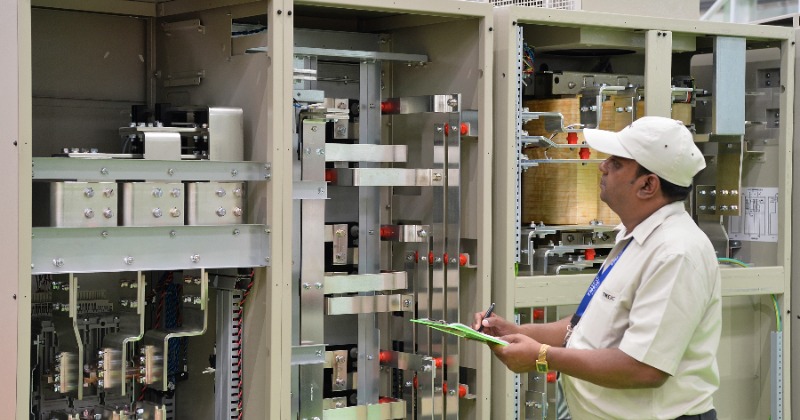Inaugurating the Centre-State Science Conclave, Prime Minister Modi highlighted the growing role of science and technology and said that India is moving towards leading the fourth industrial revolution.

AFP/Representational Image
He said “We should celebrate the achievements of our scientists. When we celebrate scientists and their innovations, science will become a part of our culture…Investment in science and technology has increased since 2014….India has been ranked 46th in the Global Innovation Index, from 81st in 2015. Today’s youth quickly adapt to technology…”
Jump To
![]()
What is Fourth Industrial Revolution?
The present technological age is known as the Fourth Industrial Revolution in which the lines between the physical, digital, and biological spheres are blurring due to the fusion of technologies.

AFP/Representational Image
According to the Business Standard, digital technology and the physical world have come together and continue to create a new range of products and services. Billions of people are connected by mobile phones today and new emerging technologies including artificial intelligence, robotics, the Internet of Things, autonomous vehicles, 3-D printing, nanotechnology, biotechnology, materials science, energy storage, and quantum computing have revolutionised the way things function.
India and the fourth revolution
During the Centre-State Science Conclave, PM Modi stated “Since 2014, there has been a substantial increase in investment in the field of science and technology. Due to the efforts of the government, today India is ranked 46th in the Global Innovation Index, whereas in 2015, India was at number 81.”

AFP/Representational Image
According to the International Federation of Robotics, India recorded a 20% average annual growth rate of new installations of robots from 2008 to 2020 as against the 15% recorded globally.
Further, Surjith Karthikeyan, Deputy Secretary, Ministry of Finance writes in The New Indian Express, that India is not keeping up the pace with the required technology integration and adequate capital investment. Despite a young force and low automation, India is expected to become the second highest country with absolute job losses in the world due to the fourth Industrial revolution.

AFP/Representational Image
He suggests that India will add 138 million new workers to its workforce in due course and thus it needs to invest in the adoption of new technology and reskilling its present workforce.
It would also bring change in “the shift of manufacturing towards consumption centres and may shrink the net exports, resulting in huge job losses in the manufacturing sector, “ he analysed.
What is the first Industrial Revolution?
The period of the 18th-19th century was the Industrial revolution era as it witnessed the agrarian, rural societies in Europe turning urban and industrial. The Industrial Revolution began in Britain in the late 17th century as earlier manufacturing was done in homes using basic machines.

AFP/Representational Image
With the introduction of Spinning Jenny in 1764, the textile sector was revolutionised in terms of manufacturing and special-purpose machinery, factories were start emerging. The iron and textile industries became the core of the revolution. The advent of steam engines and ships also played a major part in the revolution. The innovations done during the first industrial revolution were the Steam engine, Flying shuttle, Spinning Jenny, Cotton Gin, Telegraph, Cement, Modern roads, Power loom etc.
It reached every corner of the world along with the US in the 1860s after the American Civil War (1861-65). It was called Second Industrial Revolution which transformed American agrarian society into an industrial one.
The second and third industrial revolution

AFP/Representational Image
In the Second industrial revolution, the use of electric power was increased for mass production. This was a time when large-scale machines came into the picture. The phrase was defined by automobiles and the production of electricity.
In the 20th century, the invention of computers paved the path for the third revolution. During this phase, the machines became electronically driven as they were using electronics and information technology to automate production. While earlier it was electrically driven.


